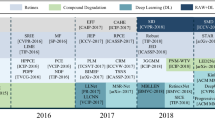Abstract
Aimed at image distortion caused in process of defogging images and interfered by bright objects, a single adaptive image defogging method based on sky segmentation is proposed in this paper. Firstly, the combination of the dark channels and bright channels is used to estimate the atmospheric light. And then the sky region and the accurate atmospheric light are obtained by the information entropy and the dark channel prior. Next, the initial transmittance is estimated by the dark channel prior, and then the fast guiding filter is utilized to estimate the transmittance accurately. Further, an adaptive weight factor and an error amplification compensation factor of bright objects are introduced to optimize the transmittance mapping constraint and to correct the sky region and the non-sky region, respectively. Finally, bright adjustments are performed on the fog-free image obtained from the atmospheric scattering model by a nonlinear mapping method, which causes a clearer and more natural defogging image to be got. The experimental results show that adaptive single image defogging algorithms proposed in this paper has the higher value of peak signal-to-noise ratio, the higher value of structural similarity index measure, the higher value of naturalness image quality evaluator, the higher value of fog aware density evaluator, and the less time consumed, which illustrates that the adaptive single image defogging algorithm proposed in this paper has a better defogging effect on haze images with sky areas and bright objects.













Similar content being viewed by others
Data Availability
The datasets generated during or analysed during the current study are available from the corresponding author on reasonable request.
The authors declare that they have no known competing financial interests or personal relationships that could have appeared to influence the work reported in this paper.
References
Baig N, Riaz MM, Ghafoor A, Siddiqui AM (2016) Image Dehazing Using Quadtree Decomposition and Entropy-Based Contextual Regularization. IEEE Signal Process Lett 23(6):853–857. https://doi.org/10.1109/LSP.2016.2559805
Berman D, Treibitz T, Avidan S (2016) Non-local Image Dehazing. IEEE Conference on Computer Vision and Pattern Recognition, Pp.1674–1682. https://doi.org/10.1109/CVPR.2016.185
Cai B, Xu X, Jia K, Qing C, Tao D (2016) DehazeNet: An end-to-end system for single image haze removal. IEEE Trans Image Process 25(11):5187–5198. https://doi.org/10.1109/TIP.2016.2598681
Choi LK, You J, Bovik AC (2015) Referenceless Prediction of Perceptual Fog Density and Perceptual Image Defogging. IEEE Trans Image Process 24(11):3888–3901. https://doi.org/10.1109/TIP.2015.2456502
Fattal R (2008) Single image dehazing. Acm Trans Graph 27(3):1–9. https://doi.org/10.1145/1360612.1360671
Guo Q, Zhou M (2022) Progressive Domain Translation Defogging Network for Real-World Fog Images. IEEE Trans Broadcast 68(4):876–885. https://doi.org/10.1109/TBC.2022.3187816
He K, Sun J (2015) Fast guided filter. https://doi.org/10.48550/arXiv.1505.00996.
He K, Sun J, Tang X (2011) Single image haze removal using dark channel prior. IEEE Trans Pattern Anal Mach Intell 33(12):2341–2353. https://doi.org/10.1109/TPAMI.2010.168
Hu XW, Xu XM, Xiao YJ, Chen H, He SF, Qin J, Heng PA (2019) SINet: A Scale-Insensitive Convolutional Neural Network for Fast Vehicle Detection. IEEE Trans Intell Transport Syst 20(3):1010–1019. https://doi.org/10.22214/ijraset.2019.6296
Jobson DJ, Rahman Z, G.A (1997) Woodell Properties and Performance of A Center/Surround Retinex. IEEE Trans on Image Process 6(3):451–462. https://doi.org/10.1109/83.557356
Kang X, Fei Z, Duan P, Li S (2021) Fog Model-Based Hyperspectral Image Defogging. IEEE Trans Geosci Remote Sens 99:1–12. https://doi.org/10.1109/TGRS.2021.3101491
Kratz L, Nishino K (2009) Factorizing scene albedo and depth from a single foggy image. Int Conf Comput Vis, Pp.1701–1708. https://doi.org/10.1109/ICCV.2009.5459382
Kumar R, Balasubramanian R, Kaushik BK (2021) Efficient Method and Architecture for Real-Time Video Defogging. IEEE Trans Intell Transp Syst 22(10):6536–6546. https://doi.org/10.1109/TITS.2020.2993906
Li Z, Long S, Zheng X, Q Zhang, Z Huang (2021) Fast Region-Adaptive Defogging and Enhancement for Outdoor Images Containing Sky[C]// 25th International Conference on Pattern Recognition (ICPR), Pp.8267–8274. https://doi.org/10.1109/ICPR48806.2021.9412595
Li B, Peng X, Wang Z, Xu J, Feng D (2015) An all-in-One network for dehazing and beyond. IEEE International Conference on Computer Vision, IEEE. pp 4780–4788. https://arxiv.org/abs/1707.06543
Li X, Qi Z, H Du, Geng Z, Quan X (2021) Deep convolutional neural network for preoperative prediction of microvascular invasion and clinical outcomes in patients with HCCs. European Radiology, Pp.778–788. https://doi.org/10.1007/s00330-021-08198-w
Li P, Tian J, Tang Y, Wu C (2020) Deep Retinex Network for Single Image Dehazing. IEEE Trans Image Process 30(99):1100–1115. https://doi.org/10.1109/TIP.2020.3040075
Li H, Wu Q, Ngan KN, Meng F (2021) Single Image Dehazing via Region Adaptive Two-shot Network. IEEE Multimed 28(3):97–106. https://doi.org/10.1109/MMUL.2021.3052821
Liu W, Hou X, Duan J, Qiu G (2020) End-to-End Single Image Fog Removal Using Enhanced Cycle Consistent Adversarial Networks. IEEE Trans Image Process 29:7819–7833. https://doi.org/10.1109/TIP.2020.3007844
Liu W, Zhou F, Lu T, Duan J, Qiu G (2021) Image Defogging Quality Assessment: Real-World Database and Method. IEEE Trans Image Process 30:176–190. https://doi.org/10.1109/TIP.2020.3033402
Meng G, Wang Y, Duan J, Xiang S, Pan C (2013) Efficient image dehazing with boundary constraint and contextual regularization. IEEE international conference on computer vision, Pp.617–624. https://doi.org/10.1109/ICCV.2013.82
Mittal A, Soundararajan R, Alan C, Bovik (2013) Making a “Completely Blind” Image Quality Analyzer. IEEE Signal Process 20(3):209–212. https://doi.org/10.1109/LSP.2012.2227726
Narasimhan SG, Nayar SK (2001) Removing weather effects from monochrome images. IEEE Comput Soc Conf Comput Vis 2:186–193. https://doi.org/10.1109/CVPR.2001.990956
Narasimhan SG, Nayar SK (2002) Vision and the atmosphere. Int J Comput Vis 48:233–254. https://doi.org/10.1023/A:1016328200723
Narasimhan SG, Wang C, Nayar SK (2002) All the images of an outdoor scene. Comput Vis (Lect Notes Comput Sci) 2352:148–162. https://doi.org/10.1007/3-540-47977-5_10
Pizer SM, Amburn EP, Austin JD, Robert C, Karel Z (1987) Adaptive histogram equalization and its variations. Comput Vis Graph Image Process 39(3):355–368. https://doi.org/10.1016/s0734-189x(87)80186-x
Qin X, Wang Z, Bai Y, Xie X, Jia H (2020) FFA-Net: feature fusion attention network for single image dehazing. Proceedings of the AAAI Conference on Artificial Intelligence 34(07):11908–11915. https://arXiv.org/abs/1911.07559
Raikwar SC, Tapaswi S (2020) Lower Bound on Transmission Using Non-Linear Bounding Function in Single Image Dehazing. IEEE Trans Image Process 29:4832–4847. https://doi.org/10.1109/TIP.2020.2975909
Ren W, Si L, Hua Z, Pan J, Yang MH (2016) Single image dehazing via multi-scale convolutional neural networks. Proceedings of 2016 European Conference on Computer Vision, Pp.154–169. https://doi.org/10.1007/978-3-319-46475-6_10
Ren W, Zhang J, Xu X, Ma L, Cao X, Meng G, Liu W (2018) Deep video dehazing with semantic segmentation. IEEE Trans Image Process 28:1895–1908. https://doi.org/10.1109/TIP.2018.2876178
Sahu G, Seal A, Krejcar O, Yazidi A (2020) Single image dehazing using a new color channel. J Vis Commun Image Represent 74(5):103008–103008. https://doi.org/10.1016/j.jvcir.2020.103008
Sharma N, Kumar V, Singla SK (2021) Single Image Defogging using Deep Learning Techniques: Past, Present and Future. Arch Comput Methods Eng 28(7):4449–4469. https://doi.org/10.1007/s11831-021-09541-6
Shin J, Kim M, Paik J, Lee S (2020) Radiance-Reflectance Combined Optimization and Structure-Guided ℓ0-Norm for Single Image Dehazing. IEEE Trans Multimedia 22(1):30–44. https://doi.org/10.1109/TMM.2019.2922127
STARK J A, (2000) Adaptive image contrast enhancement using generalizations of histgram equalization. IEEE Trans Image Process 9(5):889–896. https://doi.org/10.1109/83.841534
Sun Z, Zhang Y, Bao F, Zhang C (2021) ICycleGAN: Single image dehazing based on iterative dehazing model and CycleGAN. Comput Vis Image Understand 203(2):103133. https://doi.org/10.1016/j.cviu.2020.103133
Sun H, Zhang Z, Chen P, Dan Z, Sun S, Wan J, Li W (2021) Scale-free heterogeneous cycleGAN for defogging from a single image for autonomous driving in fog. Neural Computing and Applications, Pp.1–15. https://doi.org/10.1007/s00521-021-06296-w
Tarel JP, Nicolas H (2009) Fast visibility restoration from a single color or gray level image. IEEE Conference on Computer Vision 5:2201–2208. https://doi.org/10.1109/ICCV.2009.5459251
Zhao B (2021) Retraction note: Plateau environment and urban planning based on image defogging algorithm. Arabian Journal of Geosciences 14(15):1–14. https://doi.org/10.1007/s12517-021-07727-7
Yang W, Wang W, Huang H, Wang S, Liu J (2021) Sparse Gradient Regularized Deep Retinex Network for Robust Low-Light Image Enhancement. IEEE Trans Image Process 30:2072–2086. https://doi.org/10.1109/TIP.2021.3050850
Zhang Y, Tai SL, Li M, Liu F, Tang S (2019) Convolutional neural network models of V1 responses to complex patterns. J Comput Neurosci 46(1):33–54. https://doi.org/10.1007/s10827-018-0687-7
Zhao B (2021) Plateau environment and urban planning based on image defogging algorithm. Arab J Geosci 14(15):1–14. https://doi.org/10.1007/s12517-021-07727-7
Zhou S, Liu X, Duan J, Herz F (2022) A Novel Model-Based Defogging Method for Particle Images With Different Fog Distributions. IEEE Trans Instrum Meas 71:1–19. https://doi.org/10.1109/TIM.2022.3164154
Zhou JC, Zhang DH, Zhang WS (2020) Classical and state-of-the-art approaches for underwater image defogging: a comprehensive survey. Front Inf Technol Electron Eng 21(12):1745–1769. https://doi.org/10.1631/FITEE.2000190
Zhu Q, Mai J, Shao L (2015) A fast single image haze removal algorithm using color attenuation prior. IEEE Trans Image Process 24(11):3522–3533. https://doi.org/10.1109/TIP.2015.2446191
Acknowledgements
This work was supported in part by basic research program of Shanxi Province (Grant No.20210302123019, and 20210302123031), and Shanxi Scholarship Council of China (Grant No. 2020-104).
Author information
Authors and Affiliations
Corresponding author
Additional information
Publisher's note
Springer Nature remains neutral with regard to jurisdictional claims in published maps and institutional affiliations.
Rights and permissions
Springer Nature or its licensor (e.g. a society or other partner) holds exclusive rights to this article under a publishing agreement with the author(s) or other rightsholder(s); author self-archiving of the accepted manuscript version of this article is solely governed by the terms of such publishing agreement and applicable law.
About this article
Cite this article
Wang, W., Hu, H., Cao, S. et al. Adaptive single image defogging based on sky segmentation. Multimed Tools Appl 82, 46521–46545 (2023). https://doi.org/10.1007/s11042-023-15381-2
Received:
Revised:
Accepted:
Published:
Issue Date:
DOI: https://doi.org/10.1007/s11042-023-15381-2




